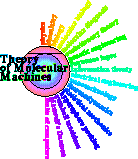
Schneider Lab
origin: 1999 March 3
updated: 1999 March 3
In preparation for the time when I fax you the instructions on how to obtain the package, there are several things that you can do:
If you haven't gotten our package of papers, it may be useful to obtain them. Also, the basic math of information theory is described in my primer, and I recently put the entire thing into html so you can read it off the web.
You will need to know how to use dbbk, catal, delila, and the publicly available stripped-down version of lister kept at listerx. The package will include ri and walker (which you probably won't use), scan and the version of lister that handles walkers. The new run.splice script uses all of these programs, but it requires that you obtain your GenBank file and that you make a dbmutatep file. Understanding the various other programs will allow you to adjust the figures to your liking. All publically availble programs are at: https://alum.mit.edu/www/toms/delila/delilaprograms.html .
![]()

Schneider Lab
origin: 1999 March 3
updated: 1999 March 3
![]()